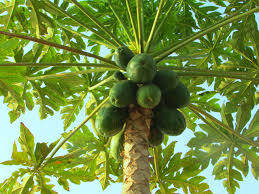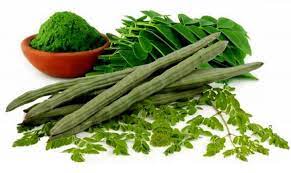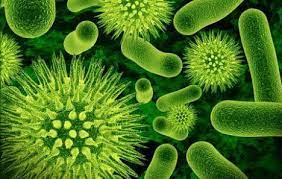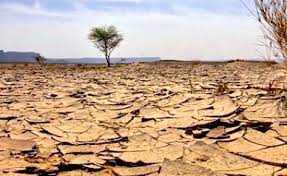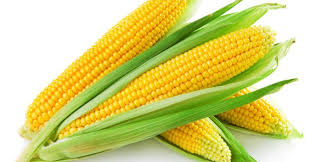
Maize or corn is a cereal crop that is grown widely throughout the world in a range of agroecological environments. More maize is produced annually than any other grain.
About fifty (50) species exist and consist of different colors, textures and grain shapes and sizes. White, yellow and red are the most common types. The white and yellow varieties are preferred by most people depending on the region.
Maize was introduced into Africa in the 1500s and has since become one of Africa’s dominant food crops. Like many other regions, it is consumed as a vegetable although it is a grain crop. The grains are rich in vitamins A, C and E, carbohydrates, and essential minerals, and contain nine percent (9%) protein. They are also rich in dietary fiber and calories which are a good source of energy.
In order to grow a healthy crop of maize you will need to combine plant production and plant protection practices.
These include site selection, soil improvement, variety and planting material selection, and planting and post-planting measures against weeds, pests and diseases.
Some of the issues are discussed below
Varieties
There are numerous varieties of maize ideal for different climates and vegetation belt but the most common varieties are Oba Super 1, Oba Super 2, Oba 98 and New Kaduna.
Planting
Any well drained sandy loam or loamy soil can be used for planting maize. Use any method (Mechanical, Chemical and Manual) that can adequately remove weeds and keep the soil loose for good seedbed. As much as possible, incorporate residue of the previous crop into the soil.
For large scale planting, clearing method should ensure preservation of the topsoil when uprooting and clearing trees mechanically.
Plant immediately after land preparation to allow maize to get ahead of the weeds. When the land is ploughed mechanically, the depth of planting should not be more than five (5) cm (2 inches).
- EARLY SEASON
- In the Forest zone, the optimum planting date is between 15th March and 1st April, although planting could be done as soon as rainfall becomes steady.
- In the Derived Savannah zone, plant as soon as the rainfall becomes steady, between 1-30 April.
- In the Southern Guinea Savannah zone, planting could still be done as late as May and June, depending on rainfall.
- LATE SEASON
Late season maize is recommended only for areas where rainfall is likely to be adequate. Popcorn is best planted in the late season where proper drying could be easily effected for optimum popping expansion. Planting should be done preferably between 1–15 August.
Seed Rate and Plant Population
Twenty (25) kilogrammes per hectare for open pollinated variety and twenty (20) kilogrammes per hectare for hybrid variety is recommended
Manures and Fertilizers
A good fertilizer recommendation for maize production depends on a good soil test. Apply the first dose within the first week of planting and the second dose between 4 and 5 weeks after planting, and make sure the fertilizer is buried.
Weed the farm before application of fertilizer. You can apply NPK 15:15:15, first dose of seven (7) bags of fifty (50) kilogrammes weight per hectare and 2nd dose of three (3) bags of fifty (50) kilogrammes weight per hectare Nitrogen fertilizer.
Incorporate the fertilizer into the soil at land preparation during harrowing and leveling the field in ration recommended above.
Weeding and Herbicides
The base of the maize should be kept clean by weeding. Alternatively, suitable weedicides can be sprayed around the base to control weeds. Both annual and perennial weeds attack maize farms necessitating farmers to carry out routine weeding.
Weeding can be done manually using hoes and other crude tools or can be achieved using chemicals (herbicides). Efficient weed control has a tendency of increasing the general output of the farm.
Climate and Irrigation
Maize may not do well if temperature is lower than 13°C but requires 480 -880mm of well distributed rainfall, or adequate water supply through irrigation. So, maize can be grown in any part of the country and at any time if irrigation is practised.
Although the minimum temperature for germination is 10 ºC, germination will be faster and less variable at soil temperatures of 16 to 18 ºC.
At 20 ºC, maize should emerge within five to six days. The critical temperature detrimentally affecting yield is approximately 32 ºC. Frost can damage maize at all growth stages and a frost-free period of one hundred and twenty (120) to one hundred and forty (140) days is required to prevent damage.
While the growth point is below the soil surface, new leaves will form and frost damage will not be too serious. Leaves of mature plants are easily damaged by frost and grain filling can be adversely affected.
Approximately 10 to 16 kg of grain are produced for every millimeter of water used.
Harvesting and Yield
Maize matures within three to four (3–4) months after planting and requires timely harvesting to check excessive yield losses.
The farm is expected to yield five (5) tons of maize per hectare with the use of improved seedling (Oba Super 2) which matures in four (4) months.
Soil Type
The most suitable soil for maize is one with a good effective depth, favorable morphological properties, good internal drainage, an optimal moisture regime, sufficient and balanced quantities of plant nutrients and chemical properties that are favorable specifically for maize production.
Although large-scale maize production takes place on soils with a clay content of less than ten percent (10 %) (sandy soils) or in excess of thirty percent (3 %) (clay and clay-loam soils), the texture classes between ten to thirty percent (10 and 30 %) have air and moisture regimes that are optimal for healthy maize production.
It needs sunlight to prosper and Nigeria is a country blessed with abundant sunlight; maize can therefore be grown successfully in almost every state of the country but the major producing states are Adamawa, Bauchi, Borno, Yobe, Jigawa, Gombe, Taraba, Plateau, Sokoto, Kebbi, Nassarawa, FCT, Niger and Zamfara.
Maize is the most important cereal crop in sub-Saharan Africa (SSA) and an important staple food for more than one billion, two hundred million (1,200,000,000) people in sub-Saharan Africa (SSA) and Latin America.
All parts of the crop can be used for food and non-food products. In industrialized countries, maize is largely used as livestock feed and as a raw material for industrial products. Maize accounts for thirty to fifty percent (30−50%) of low-income household expenditures in Eastern and Southern Africa.
Worldwide production of maize is seven hundred and eighty-five million (785,000,000) tons, with the largest producer, the United States, producing fourty-two percent (42%). Africa produces six point five percent (6.5%) and the largest African producer is Nigeria with nearly eight point five million (8,500,000) tons, followed by South Africa. Africa imports twenty-eight percent (28%) of the required maize from countries outside the continent.
Most maize production in Africa is rain fed. Irregular rainfall can trigger famines during occasional droughts.
According to a food and agriculture organization (FAO) estimates (2007), one hundred and fifty-eight million (158,000,000) hectares of maize are harvested worldwide. Africa harvests twenty-nine million (29,000,000) hectares, with Nigeria, the largest producer in sub-Saharan Africa (SSA), harvesting three percent (3%), followed by Tanzania.
Worldwide consumption of maize is more than one hundred and sixteen million (116,000,000) tons, with Africa consuming thirty percent (30%) and sub-Saharan Africa (SSA) twenty-one percent (21%).
However, Lesotho has the largest consumption per capita with one hundred and seventy-four (174) kilogrammes per year. Eastern and Southern Africa uses eighty-five percent (85%) of its production as food, while Africa as a whole uses ninety-five percent (95%), compared to other world regions that use most of its maize as animal feed.
Ninety percent of white maize consumption is in Africa and Central America. It fetches premium prices in Southern Africa where it represents the main staple food. Yellow maize is preferred in most parts of South America and the Caribbean. It is also the preferred animal feed in many regions as it gives a yellow color to poultry, egg yolks and animal fat.
Maize is processed and prepared in various forms depending on the country. Ground maize is prepared into porridge in Eastern and Southern Africa, while maize flour is prepared into porridge in West Africa. Ground maize is also fried or baked in many countries.
In all parts of Africa, green (fresh) maize is boiled or roasted on its cob and served as a snack. Popcorn is also a popular snack.
Corn starch, sometimes referred to as corn flour, is a carbohydrate extracted from the endosperm of corn. This white powdery substance is used for many culinary, household, and industrial purposes. In the kitchen, corn starch is most often used as a thickening agent for sauces, gravies, glazes, soups, casseroles, pies, and other desserts.
Because corn starch is made from corn and only contains carbohydrates (no protein), it is a gluten-free product. For this reason, corn starch is an excellent gluten-free alternative to flour thickeners in recipes.
The total land area planted to maize in Nigeria is above two million, five hundred thousand (2,500,000) hectares with an estimated yield of about one point four (1.4) metric tones per hectare.
However, the unfolding performance of maize can be attributed to the fact that, bulk of the country’s farm, over ninety percent (90%) is dependent on subsistence agriculture (small holder farmers) with rudimentary farm system, low capitalization and low yield per hectare.
Moreover, price fluctuation, diseases and pest, poor storage facilities and efficiency of resource utilization are the identified problems of low maize production in Nigeria.
The situation highlighted above has led to a deficit in supply of maize which current stands at about eight point five million (8,500,000) tons annually to the seven million (7,000,000) tons being supplied annually. This is a seller’s market and an opportunity for savvy investors to take position.
Do you want more details about the subject matter?
You can order our detailed feasibility report on maize cultivation, processing and sales in Nigeria by clicking on the link below.
MAIZE CULTIVATION, PROCESSING AND SALES IN NIGERIA; THE FEASIBILITY REPORT.
Anaekwe Everistus Nnamdi Ikechukwu is a business development consultant and the chief research officer of Foraminifera Market Research Limited.
Contact us with any of the details provided below to arrange a meeting
Office Phone Number: 01- 295 24 13 (Monday – Saturday; 8 am – 5 pm)
Mobile Number: +234 (0) 8033782777 (Monday – Saturday; 8 am – 6 pm)
E-Mail Address: foraminiferaltd@gmail.com
CC: foraminiferamarketresearch@yahoo.com
Office Address:
61-65 Egbe- Isolo Road,
Iyana Ejigbo Shopping Arcade,
Block C, Suit 39,
Iyana Ejigbo Bus Stop,
Ejigbo, Lagos.


















